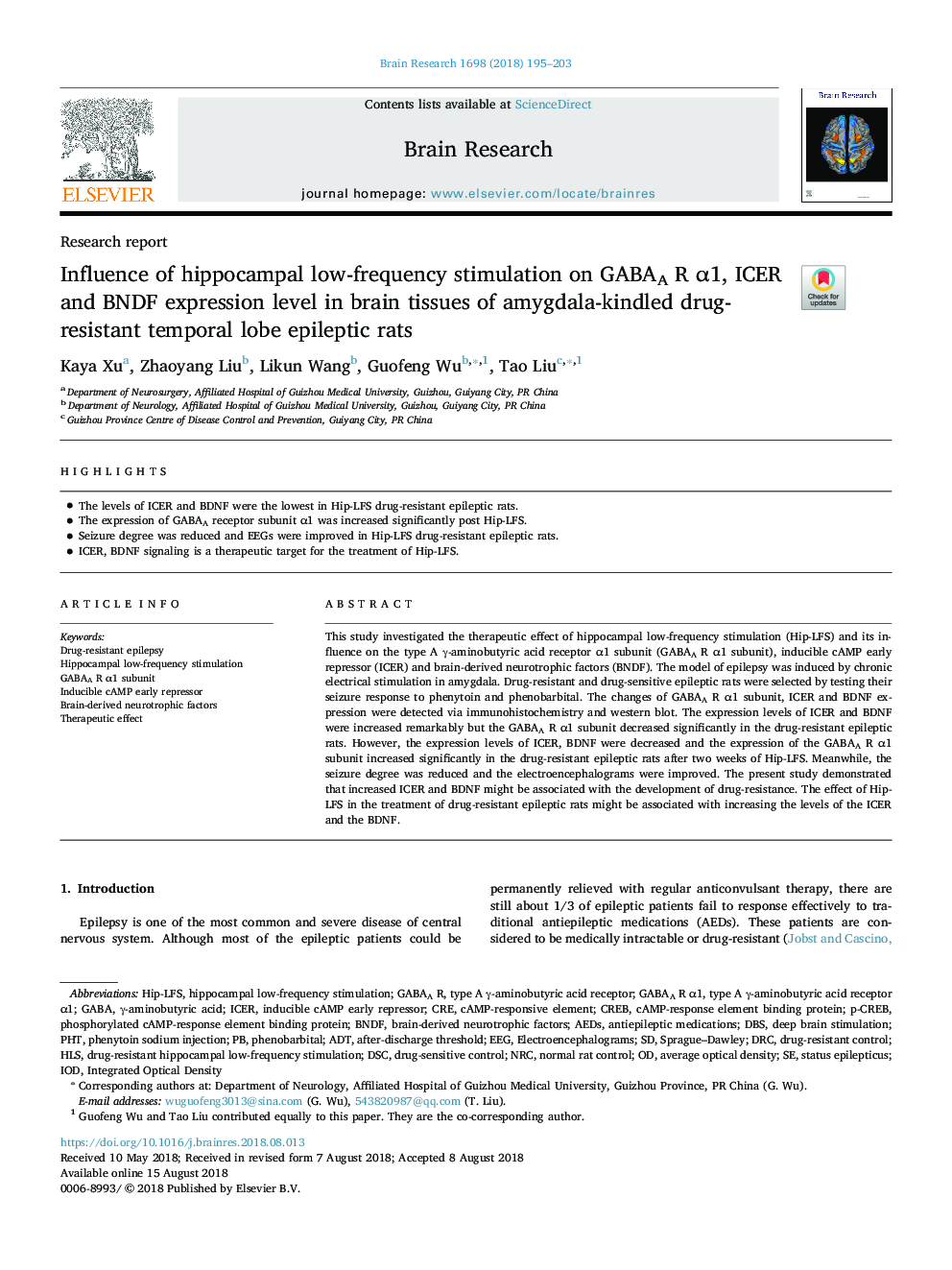| Article ID | Journal | Published Year | Pages | File Type |
|---|---|---|---|---|
| 8839659 | Brain Research | 2018 | 9 Pages |
Abstract
This study investigated the therapeutic effect of hippocampal low-frequency stimulation (Hip-LFS) and its influence on the type A γ-aminobutyric acid receptor α1 subunit (GABAA R α1 subunit), inducible cAMP early repressor (ICER) and brain-derived neurotrophic factors (BNDF). The model of epilepsy was induced by chronic electrical stimulation in amygdala. Drug-resistant and drug-sensitive epileptic rats were selected by testing their seizure response to phenytoin and phenobarbital. The changes of GABAA R α1 subunit, ICER and BDNF expression were detected via immunohistochemistry and western blot. The expression levels of ICER and BDNF were increased remarkably but the GABAA R α1 subunit decreased significantly in the drug-resistant epileptic rats. However, the expression levels of ICER, BDNF were decreased and the expression of the GABAA R α1 subunit increased significantly in the drug-resistant epileptic rats after two weeks of Hip-LFS. Meanwhile, the seizure degree was reduced and the electroencephalograms were improved. The present study demonstrated that increased ICER and BDNF might be associated with the development of drug-resistance. The effect of Hip-LFS in the treatment of drug-resistant epileptic rats might be associated with increasing the levels of the ICER and the BDNF.
Keywords
CREBaverage optical densityp-CREBElectroencephalogramsAEDsADTIODPHTHLSBNDFNRCDRCCREICERDBSDSCTherapeutic effectSprague–Dawleyγ-aminobutyric acidstatus epilepticusdeep brain stimulationintegrated optical densityAntiepileptic medicationsInducible cAMP early repressordrug-resistant epilepsycAMP-responsive elementbrain-derived neurotrophic factorsPhenobarbitalEEGcAMP-response element binding proteinGABA
Related Topics
Life Sciences
Neuroscience
Neuroscience (General)
Authors
Kaya Xu, Zhaoyang Liu, Likun Wang, Guofeng Wu, Tao Liu,
